Introduction.
In today’s digital world, data protection is more critical than ever. As organizations move to the cloud, ensuring that their data is secure, backed up, and recoverable becomes a top priority. Amazon Web Services (AWS) offers a robust solution for automating backups across various AWS resources, ensuring that your data remains safe from unforeseen events, such as accidental deletion, corruption, or hardware failure. AWS Backup is a fully managed backup service that simplifies the backup and restore process for AWS cloud services, including Amazon EBS volumes, RDS databases, DynamoDB tables, and more.
Configuring AWS Backup is a straightforward process, but it requires understanding the services you want to back up, the frequency of backups, and the retention policies. This guide will walk you through the steps of configuring AWS Backup, from setting up backup plans to automating backups across your AWS resources. By the end of this post, you’ll understand how to create backup policies, schedule regular backups, and ensure compliance with your organization’s data retention policies.
One of the key features of AWS Backup is its ability to centralize backup management across multiple AWS services, providing a unified console for backup monitoring and management. This eliminates the need for manual backup tasks and helps mitigate the risk of human error. Furthermore, with built-in encryption, AWS Backup ensures that your data remains secure both at rest and in transit.
Whether you’re new to AWS or looking to optimize your cloud data protection strategy, this guide will provide you with the knowledge and tools to effectively configure AWS Backup. Let’s dive into the process and see how you can take advantage of this powerful service to safeguard your valuable data in the cloud.
STEP 1: Navigate the AWS backup and click on create vault.
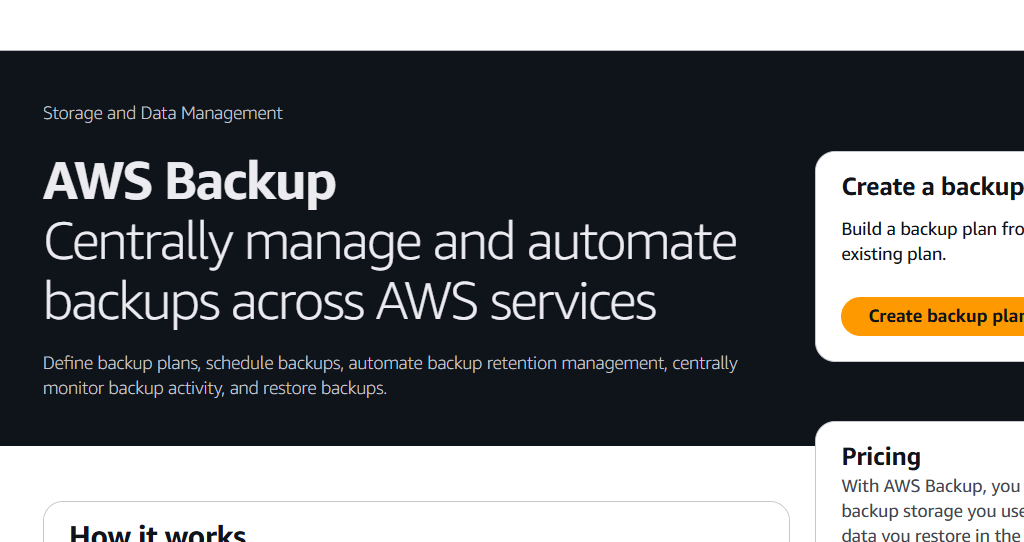
STEP 2: Enter the vault name Select the vault type.
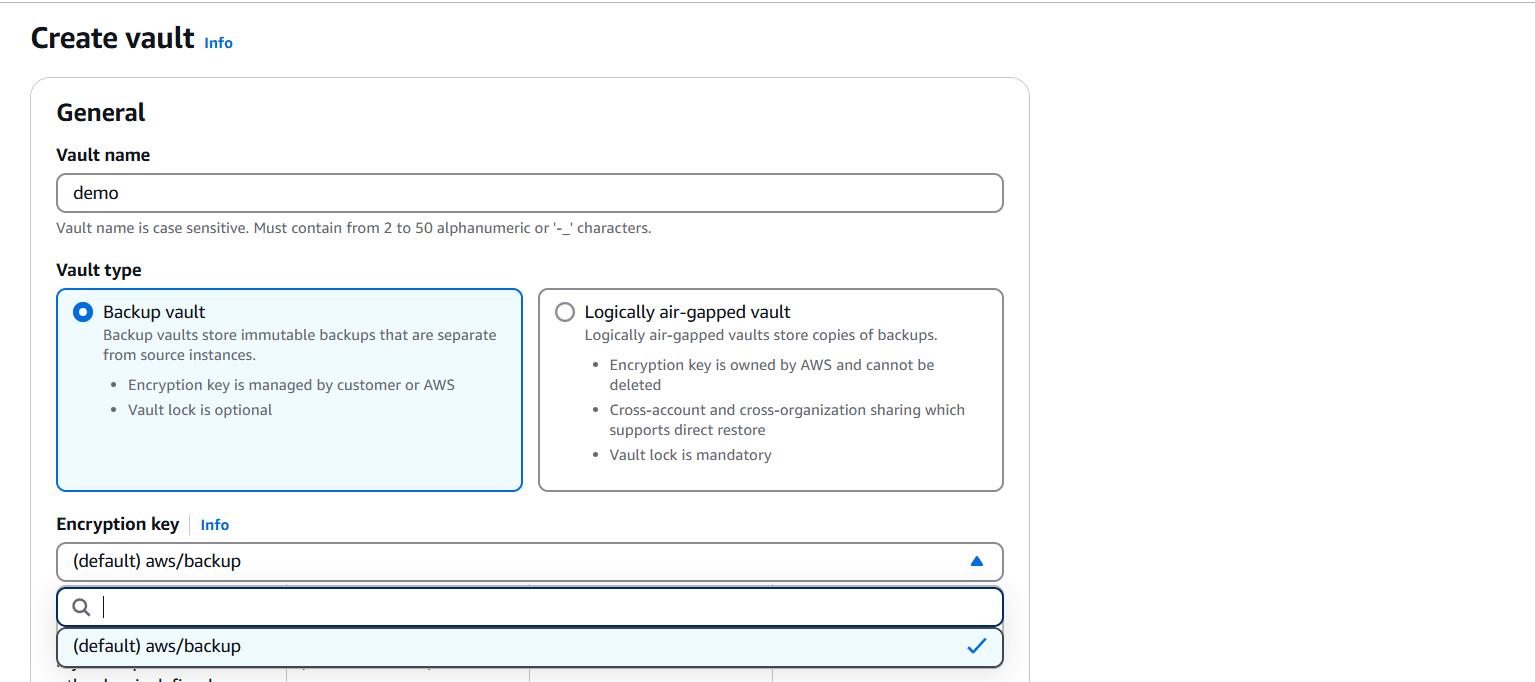
STEP 3: Click on create Vault.
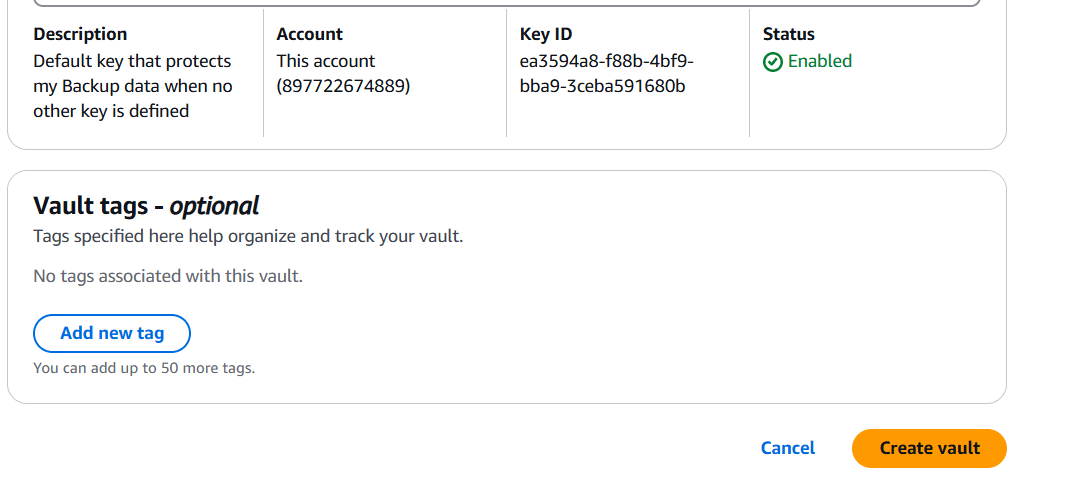
STEP 4: Click on create backup plan.

STEP 5: Select back plan and templates.
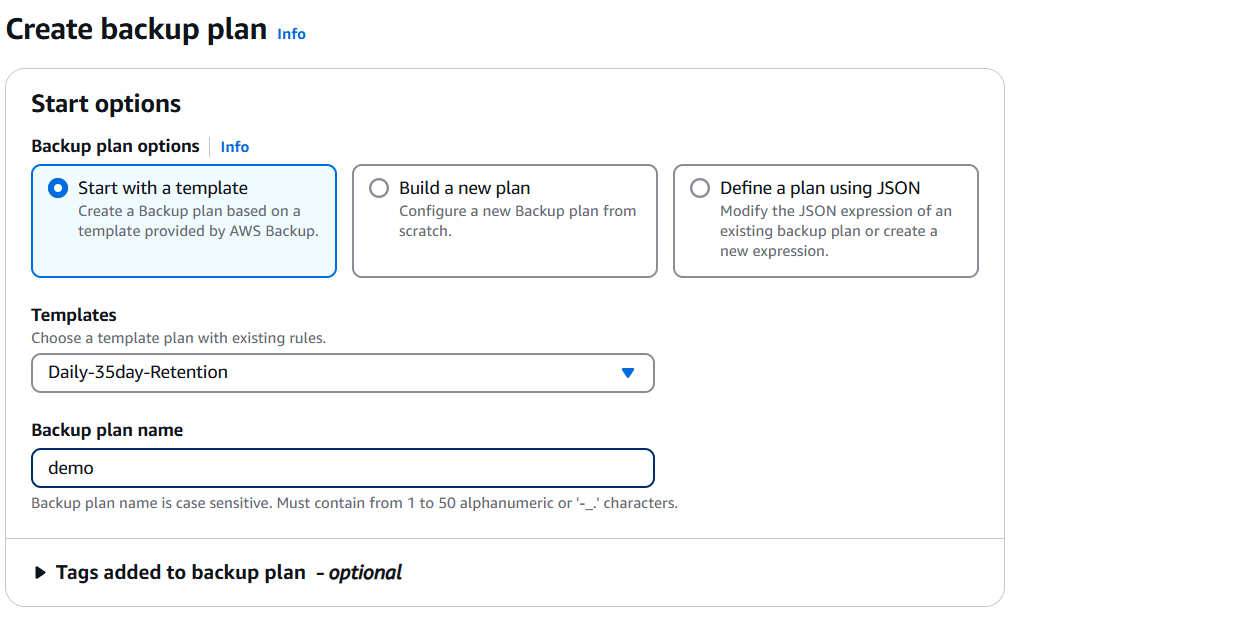
STEP 6: Click on create plan.

STEP 7: Select the following options.
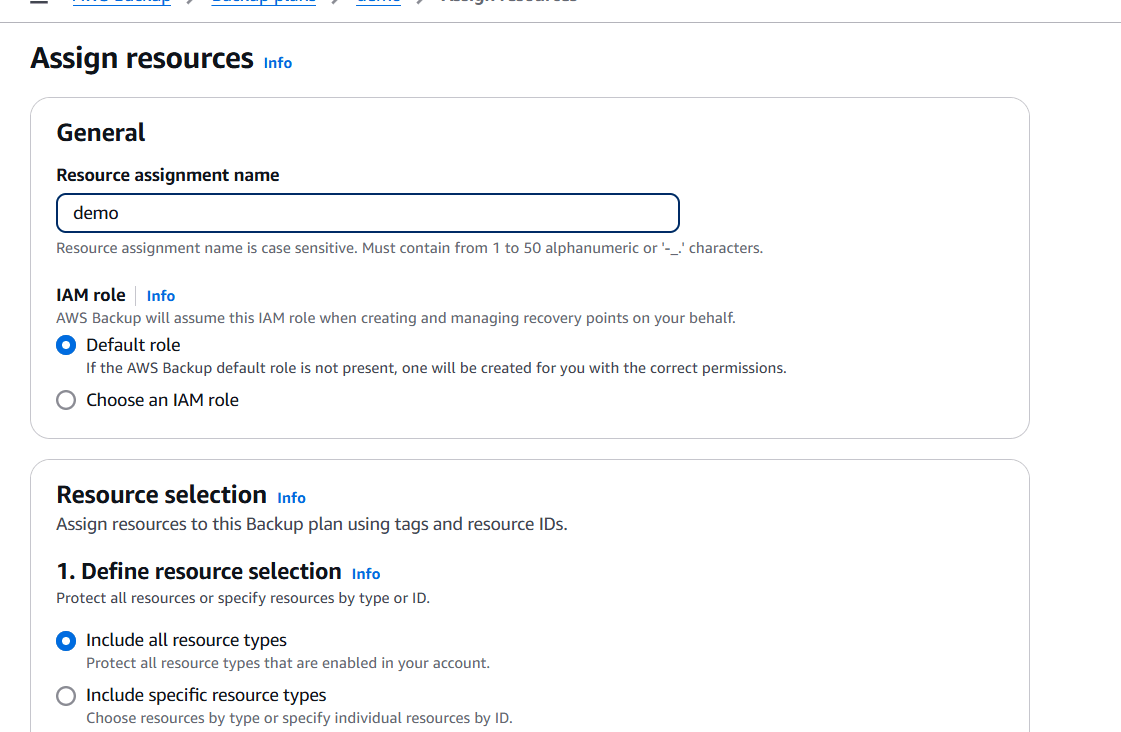
STEP 8: Click on assign resources.
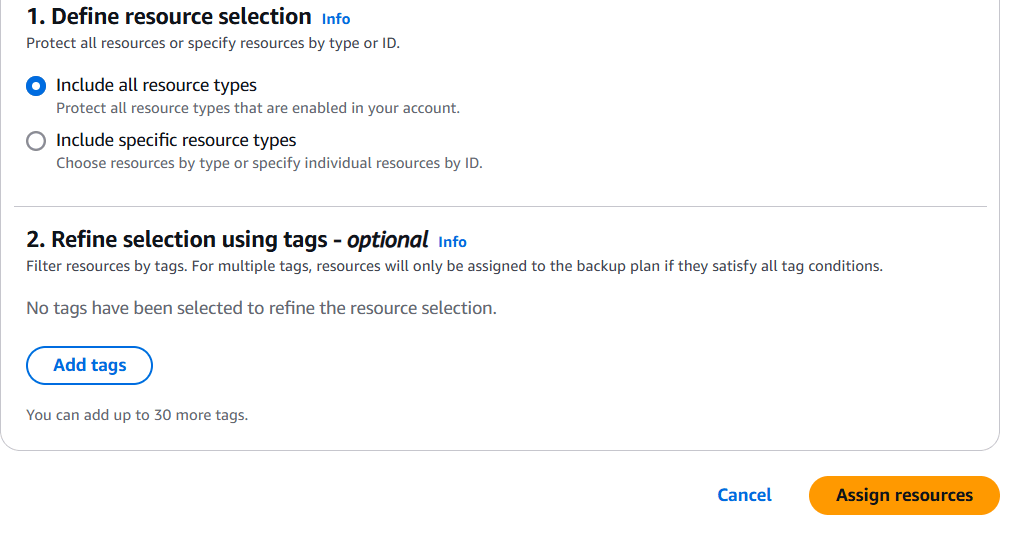
STEP 9: Click on continue.
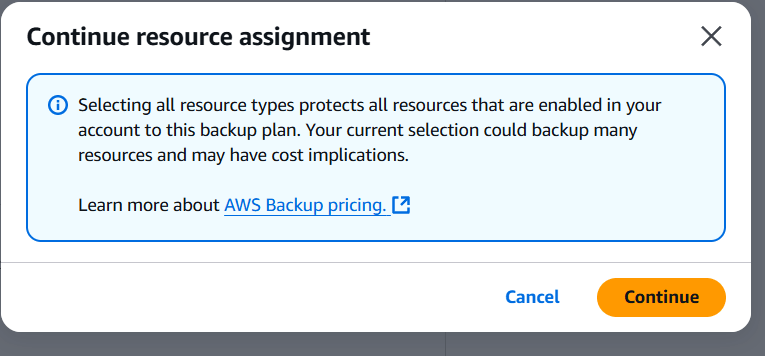
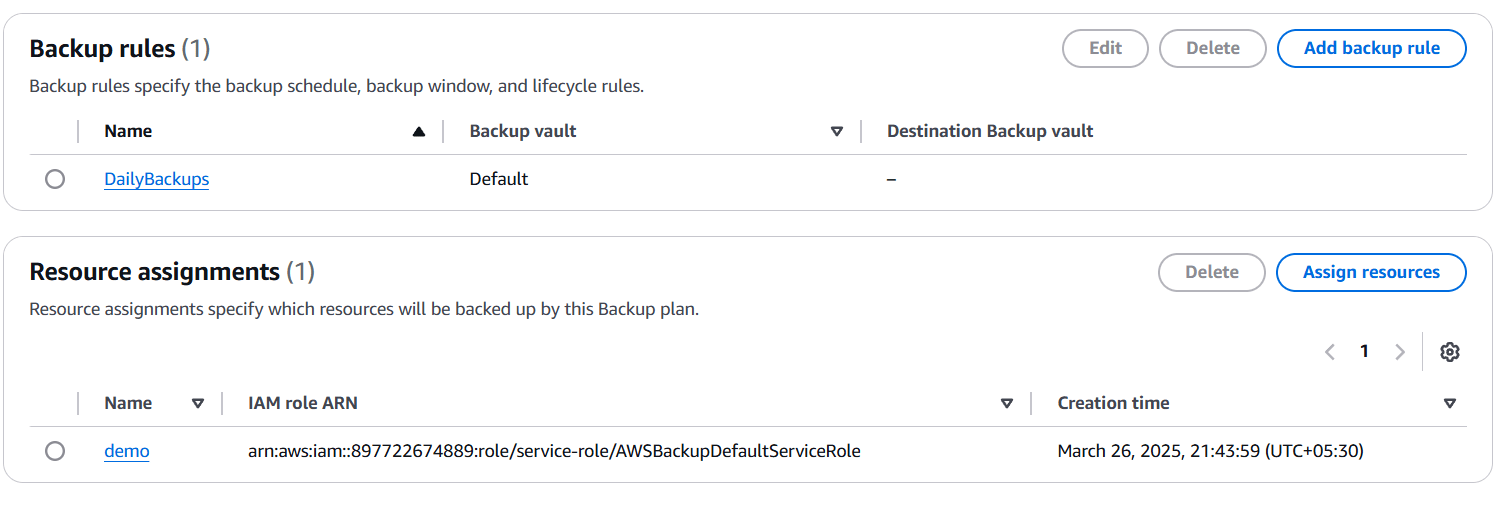
Conclusion.
In conclusion, configuring AWS Backup is an essential step in ensuring the protection, reliability, and availability of your data in the cloud. By leveraging AWS Backup, organizations can automate backup processes, reduce the risk of data loss, and meet compliance requirements with minimal effort. The service provides a comprehensive solution for backing up a wide range of AWS resources, with flexible scheduling, retention, and encryption options.
As businesses continue to migrate to the cloud, having a solid backup strategy in place is crucial to mitigate the impact of unexpected data loss or disasters. AWS Backup simplifies this by centralizing and automating backup management, giving you peace of mind knowing that your critical data is secure and recoverable.
By following the steps outlined in this guide, you can confidently set up AWS Backup, ensuring that your cloud data is well-protected while allowing for seamless restoration when needed. Embracing AWS Backup as part of your cloud strategy not only optimizes data protection but also enhances the overall resilience of your infrastructure.

Add a Comment